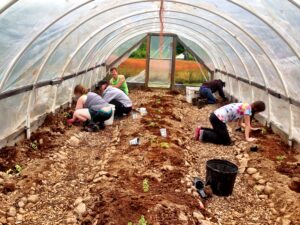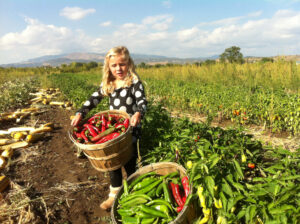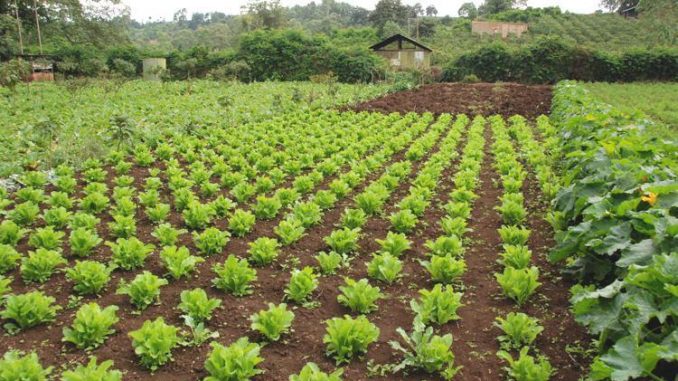Organic farmers, ranchers, and food processors follow a specified set of criteria to create organic food and fiber. Congress explained overall organic principles in the Organic Foods Production Act, along with the USDA defines specific organic standards. These standards cover the thing from the farm into tables, including soil and water quality, pest management, farming practices, and rules for food additives.
The retail market for organic products was valued at $39.1 billion in the Organic Trade Association in 2015 and keeps growing.
The Farm Service Agency (FSA) will aid you with the cost of committing to the organic, organic certificate, land, buildings, repairs, insurance, area buffers, routine operating expenditures, storage and handling equipment, crop losses, soil and water conservation, mapping area bounds, and acreage reporting.
Programs to help organic farming
Contents
Accredited surgeries may get around 50 percent of the certificate costs paid during the calendar year, not to exceed $500 per certification range.
- Financial aid to install conservation buffer zones. This financial assistance helps farmers with the cost of placing protective all-natural borders together with areas that create organic crops. The Conservation Reserve Program (CRP) provides capital to agricultural producers in order that environmentally-sensitive property is not farmed or ranched but instead employed for conservation advantages. Funding is available for establishing trees and shrubs, or from pollinating species, and can be planted in cubes or strips. Interested organic manufacturers can offer qualified land for registration within this initiative at any certain time.
- The Noninsured Crop Disaster Assistance Program provides financial aid for 55 to 100 percent of their normal market price for natural harvest losses between 50 to 65 percent of expected production because of a natural catastrophe. New farmers and traditionally underserved or limited resource farmers are eligible for a free devastating policy and discounted premiums on the increased policy.

Programs to help organic farming
- Interim financing after harvest. Marketing assistance loans are offered that provide interim financing to help organic producers meet cash flow requirements without needing to sell crops during harvest when market prices are reduced. Deficiency payments are also readily available to producers who forgo the loan in exchange for payment on the product that is eligible.
- Loans for storage centers. Farm Storage Facility Loans deliver low-interest funding to construct or upgrade storage facilities like natural commodities, such as cold storage, grain bins, bulk tanks, and drying and handling equipment.
- Low-interest Loans (like microloans and conservation loans) to transition into organic production, assist buy or expand land, build or improve buildings, land and water conservation, regular operating expenses, gas, insurance, equipment, repairs, and a whole lot more!
- Services such as mapping farm and field boundaries, and coverage natural acreage, that may be supplied to a farm’s organic certifier or crop insurance agent.
Government Grants for New Organic Farms
Beginning a farm goes beyond tilling property for the very first time and building barns. Outside the traditional facets of farming, there are financial problems that require addressing in what is essentially a business performance. The government, chiefly the U.S. Department of Agriculture, provides grants and also a lot of different types of financial aid to new farmers to assist them to start. 1 area of farming that many grant programs concentrate on is farming.
- Environmental Quality Incentives Program
Traditional farmers wanting to switch to organic farming can get grants from the USDA’s Environmental Quality Incentives Program. Farmers who have an organic certification may also receive grants to add organic farmland or include conservation practices, such as crop rotation and nutrient control. Agricultural producers can get up to $20,000 annually or around $80,000 over 6 decades. Farmers are interested in applying need to contact their regional USDA service center. Check with the USDA on program deadlines. Organic farmers need to meet certification criteria according to the USDA’s Agricultural Marketing Service.

Programs to help organic farming
- Organic Cost Share Program
Individuals wanting an official certificate as an organic farmer before a startup may get reimbursement for the expenses through the USDA’s Organic Cost Share Program. “The cost of organic certification might be prohibitive for some,” that the Agricultural Marketing Service says on its site. “By providing reimbursement for certification-related costs, the USDA recognizes the expense of regulation and makes certificate cheaper.” Farmers undergoing certification from qualified applications submit settlement applications to state agriculture departments or other state agencies. The country offices process the software, and the USDA reimburses 75 percent of their certification expenses, as much as $750.
- Beginning Farmer and Rancher Development Program
New organic farmers can benefit from programs that aren’t especially for organic growers however that includes them with all types of farmers. The initiative addresses the rising average age for farmers, which is 57 years old, according to the USDA. To assist less experienced farmers to keep themselves, the program offers to grant money to individuals who’ve been farming or ranching for ten decades or less. Grants go into state, tribal, and local government agencies, neighborhood associations, and universities which, consequently, use the money to help independent agricultural producers.
- Integrated Organic Program
Part of the way the USDA attempts to assist more organic farms to begin is by disseminating information relating to them. Here is actually the Integrated Organic Program’s intention. The program funds two types of initiatives, one of which is for new and increasing research, extension, and higher education programs that help farmers, and farmers transitioning to organic agriculture. The next program is for established organic farmers to boost their operations. Grants are readily available to state schools, colleges and universities, companies, nonprofits, and land grant institutions.
